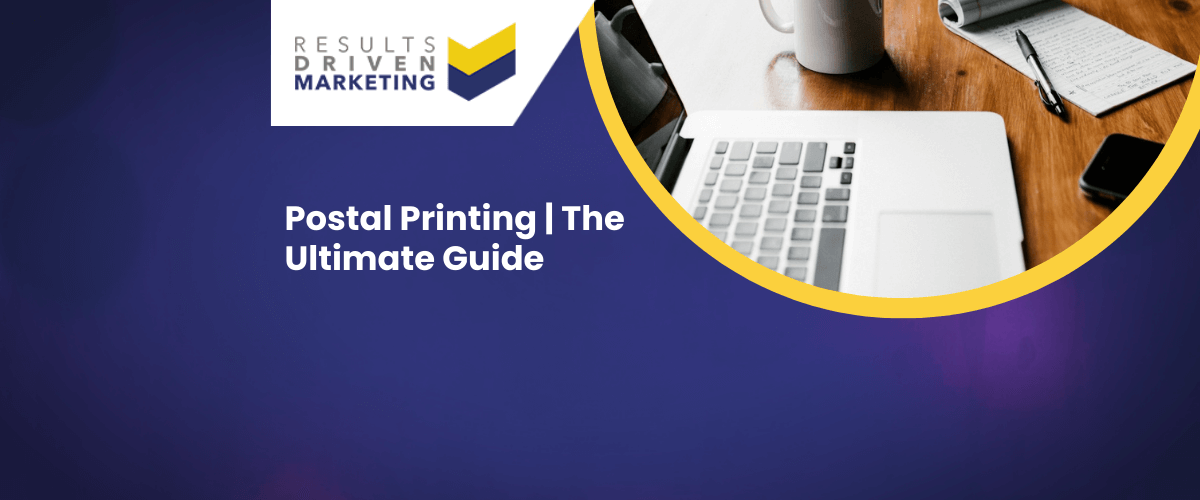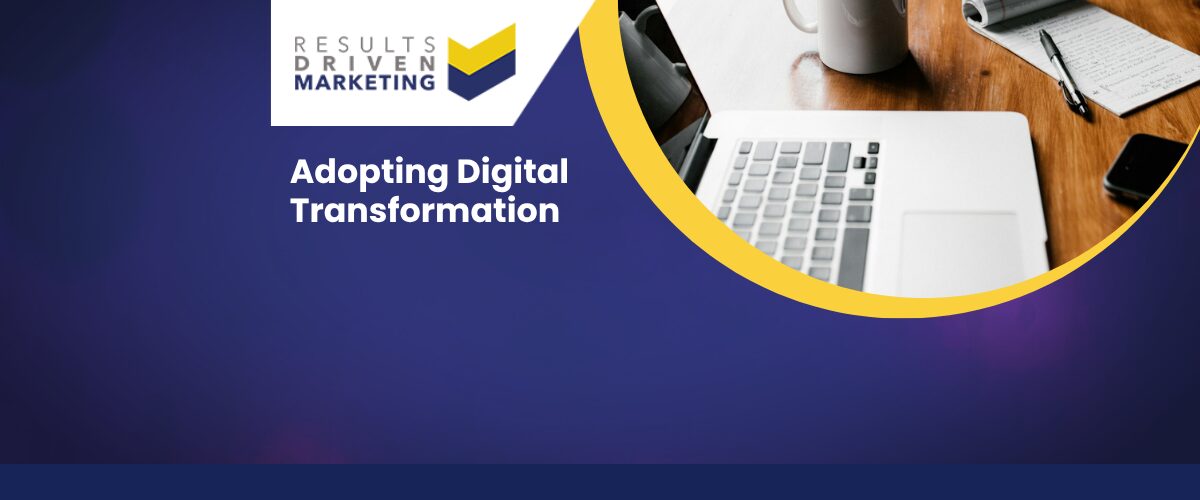
Postal Printing | The Ultimate Guide
Welcome to the all-encompassing guide to the intriguing world of postal printing! Whether you’re a seasoned professional looking for the latest trends, a small business owner aiming to scale your operations, or a curious newbie venturing into this sector, this guide is your one-stop solution to mastering postal printing.
From exploring its history, and diving deep into the modern mechanics, to peeking into future prospects, we’re here to unravel the complex layers of postal printing for you, all in an engaging, easy-to-understand, and conversational tone. And yes, it’s not just about the machines or the technology! This guide will also introduce you to the myriad regulations and international standards that form the backbone of the global postal system.
Whether you’re trying to decipher the types of postal printing, figuring out the right kind of paper to use, or just wanting to understand the best practices to follow, our guide promises to enlighten you. We’ve got tips, tricks, and expert advice to help you master postal printing in no time. So let’s dive in, shall we?
Speak to one of our experts today about your specific campaign needs
Postal Printing 101: Understanding the Mechanism Behind Your Mail
You’ve probably heard of it, or maybe even used it, but have you ever wondered what it really entails? Well, we’ve got you covered! This part of the article is going to be your handy guide to understanding postal printing, so strap in and get ready to become a pro on the subject!
So, let’s kick things off with the basics: what exactly is postal printing?
Simply put, postal printing involves the printing of materials that are meant to be sent via the postal service. This could range from your everyday postcards, envelopes, and letters to more complex items like packages, boxes, and even postage stamps. The magic lies in the fact that all these materials are customised and made readily identifiable with various print techniques.
An important aspect of postal printing is the barcode. You’ve seen it, right? That mysterious series of lines and numbers printed on your packages or mail? That’s a barcode, and it’s integral to postal printing. It’s a coded label that can be scanned to track your mail’s journey from the sender to the recipient. It’s the secret sauce to ensuring your precious package reaches its destination safely!
And let’s not forget about address printing.
Each piece of mail that goes through the postal system needs a printed address. This is usually done with high-quality printers that can handle the volume and ensure each address is clear and easy to read. That’s the heart of postal printing – ensuring that every piece of mail gets to where it needs to go!
Now, let’s talk technology. Over the years, postal printing has evolved from the manual systems of yore to highly automated ones. Modern printers can churn out thousands of printed envelopes or packages in an hour, all while ensuring top-notch quality and precision.
But that’s not all! Postal printing is not just about the printing itself; it’s also about the preparation and finishing. These tasks include folding, inserting, sealing, and sorting the mail. With technology, these processes have become faster and more efficient, transforming postal printing into a seamless, streamlined operation.
To sum it up, postal printing is a fascinating blend of technology, precision, and logistics. The silent engine powers the global mail and package delivery system. So, the next time you send a letter or receive a package, take a moment to appreciate the complex world of postal printing that made it all possible.
There you have it – your crash course on postal printing! Whether you’re navigating the world of business mail or just curious about how your package magically arrives at your doorstep, we hope this article provided some valuable insight into the often overlooked but vital world of postal printing.
Speak to one of our experts today about your specific campaign needs
From Gutenberg to Barcodes: The Fascinating History of Postal Printing
Ready? Let’s hit the time machine and travel back to where it all began.
In the very beginning, the concept of postal printing was virtually nonexistent. Communication over long distances involved handwritten letters, hand-delivered by couriers who would travel across continents and seas. No barcodes, no fancy printing machines, just the human touch.
But as civilisation progressed and the need for more efficient communication grew, the concept of postal services and subsequently, postal printing, began to take shape. The invention of the printing press by Johannes Gutenberg in the 15th century marked a significant turning point. Although initially used mainly for book printing, this technology would eventually revolutionise postal printing.
Let’s fast forward a few centuries to 1840, a monumental year in the history of postal printing. It was the year the first adhesive postage stamp, the “Penny Black”, was introduced in the United Kingdom. This innovation standardised postal rates and provided a means of prepaying postage, which was a game-changer in the postal industry. It also marked the beginning of postage stamp printing, a significant component of postal printing.
In the 20th century, things really started to pick up speed.
Technological advancements led to the introduction of automated machines that could sort and print mail at high speeds. This era saw the birth of envelope and address printers, barcode printers, and the like, making the postal printing process more streamlined and efficient.
The use of barcodes in postal printing, which started in the latter part of the 20th century, was another major breakthrough. It made tracking and sorting mail easier and more accurate, marking a significant shift in how postal services operated.
Fast forward to today, and postal printing is an advanced, high-tech industry. Modern postal printing systems can handle large volumes of mail, printing addresses, return information, barcodes, and more with incredible speed and accuracy. But it’s not just about speed and efficiency. The printing quality has also greatly improved, ensuring clear, legible prints that withstand the journey through the postal system.
The history of postal printing is a fascinating testament to human ingenuity and our ceaseless quest for better communication. It’s the story of how we’ve evolved from handwritten letters hand-delivered on horseback to barcoded mail sorted and delivered by automated machines. And who knows what the future holds? As technology continues to evolve, so too will postal printing.
That’s it for our little historical adventure! We hope you’ve enjoyed this journey through the history of postal printing as much as we have. Stay tuned as we continue to explore more fascinating aspects of postal printing. And remember, the next time you receive a piece of mail, you’re holding a piece of history in your hands!
Speak to one of our experts today about your specific campaign needs
Mastering Mail: An In-Depth Exploration of Postal Printing Techniques
Here, we’re going to uncover the magic behind various postal printing techniques. So, put on your explorer’s hat and let’s embark on this adventure together, shall we?
Digital Postal Printing
Now, this is the cool kid on the block in the world of postal printing. Digital printing has revolutionised the industry with its high-quality prints and efficient turnaround times. It works by translating digital files into printed images, allowing for quick setup and customisation. So, whether you’re sending out a small batch of personalised postcards or mass mailing thousands of identical brochures, digital printing’s got your back!
Offset Postal Printing
Here’s where we go a bit old school. Offset printing has been around for a while and is known for its incredible precision and high-quality images. The technique involves transferring an image from a plate to a rubber blanket, and then to the printing surface – a bit like a stamp, really. While it requires more setup time than digital printing, offset printing is an excellent option for large print runs due to its cost-effectiveness and superior image quality.
Flexographic Postal Printing
Flexographic printing, or flexo for short, is the go-to method for printing on corrugated boxes, envelopes, and other packaging materials. It uses flexible relief plates to print on a variety of substrates. Think of flexo as the chameleon of postal printing techniques – it’s versatile, quick, and can adapt to different printing surfaces!
Thermal Postal Printing
You know those barcodes we talked about in our previous articles? Well, they’re often printed using thermal printing techniques. This method uses heat-sensitive paper and heat to produce images. While it may not be the best for detailed, multi-coloured prints, thermal printing is quick, efficient, and perfect for things like barcodes and shipping labels.
Inkjet Printing
Last, but definitely not least, we have inkjet printing. It’s a popular choice for printing addresses and other information directly on packages and envelopes. The technique involves spraying tiny droplets of ink onto the printing surface, creating high-quality and clear images.
Each of these techniques brings something unique to the table, and the choice depends on what you’re looking to achieve with your postal printing project. Factors like the type of material you’re printing on, the number of items you need to print, and the level of detail and colour in your design will all play a role in deciding which technique to use.
Whether you’re a professional in the industry or simply a curious mind, we hope this guide has shed some light on the fascinating world of postal printing. Remember, each piece of mail you receive has a story – and the printing technique is a big part of that tale!
Speak to one of our experts today about your specific campaign needs
The Secret Life of Mail: Uncovering Security Techniques in Postal Printing
Now, when it comes to postal printing, one thing we can’t overlook is security. It’s crucial, right? After all, mail often contains sensitive information. This is where some smart security techniques come into play.
Barcodes
Ah, the humble barcode, a series of lines and spaces – an unsung hero in the realm of postal security. Barcodes enable tracking of every piece of mail, ensuring that it gets where it’s supposed to go. They also help prevent and detect any unauthorised tampering or fraudulent activities during transit. So, the next time you see a barcode, give it a little nod of appreciation for the role it plays in postal printing security!
Security Inks
Here’s where things get a bit James Bond-esque. Security inks are a fascinating aspect of postal printing security. They can include everything from UV reactive inks, which are only visible under UV light, to thermo-sensitive inks that change colour with temperature variations. This makes forgery or alteration incredibly difficult and helps to ensure the authenticity and integrity of the mail.
Microprinting
Ever heard of microprinting? It’s a technique where incredibly tiny text, often the size of a speck of dust, is printed onto the mail. This text is usually unreadable to the naked eye and can only be seen clearly under magnification. It’s a smart way to deter counterfeiting because reproducing such tiny text accurately with a scanner or photocopier is almost impossible.
Watermarks
Watermarks are designs or patterns incorporated into the paper during its production. They are either visible to the naked eye or require a light source to be seen. Watermarks are hard to replicate, providing an additional level of security to prevent forgery.
Tamper-evident seals
Sometimes, security is about letting you know when a breach has occurred. That’s where tamper-evident seals come in. These are often used on packages and envelopes, and any attempt to open or tamper with the mail will be clearly evident. It’s like having a watchdog for your mail!
Security in postal printing is like a hidden fortress, providing layers of protection to keep your mail safe. As technology advances, we can look forward to even more innovative and effective security measures in the future.
We hope this peek into the secretive world of postal printing security has been enlightening. Remember, while the technology and methods are sophisticated, the goal is simple – to keep your mail safe and secure from sender to recipient.
Speak to one of our experts today about your specific campaign needs
Postal Printing: A Canvas for Creativity and Design
When we think of postal printing, we often focus on the technical aspects — the machinery, the processes, the security measures. But there’s another side to postal printing that’s equally important, and dare we say, a bit more fun. That’s right, we’re talking about design and artistry.
Let’s start with postage stamps.
These little pieces of adhesive paper are a canvas for amazing artworks. Over the years, stamps have featured everything from historical figures and events to fauna, flora, and even pop culture icons. They’re not just a means of paying for postage; they’re miniature windows into a country’s culture, history, and values. The art of stamp design involves a delicate balance of aesthetics and practicality, combining visual appeal with essential elements like denomination, country name, and often, security features.
Next up, we have envelopes and packaging.
Who said they need to be plain and boring? Many businesses use postal printing to turn their mail into marketing tools. This involves designing eye-catching envelopes and packages that make a strong first impression. It could be as simple as printing the company’s logo and colours, or it could involve more intricate designs and illustrations. The key here is to create something that stands out in the recipient’s mail pile while still ensuring the mail’s readability and durability.
Let’s not forget postcards.
Whether they’re promoting a tourist destination, an event, or a brand, postcards are another outlet for creativity in postal printing. The best postcards combine compelling images with a clear, concise message – all while fitting into the standard postcard format.
Personalised mail is another area where design comes into play.
By using variable data printing, businesses can tailor their mail to individual recipients, creating designs that incorporate the recipient’s name, preferences, or past interactions with the brand. This not only makes the mail more relevant to the recipient, but it can also increase engagement and response rates.
And of course, there’s the holiday season.
Every year, millions of people send greeting cards to their loved ones to celebrate various holidays. This leads to a surge in demand for festive, eye-catching designs that convey the spirit of the season.
The artistry and design in postal printing is a testament to the creativity and ingenuity of graphic designers and illustrators around the world. It’s a reminder that postal printing is not just about function, but also about form and aesthetics.
So, the next time you pick up a piece of mail, take a moment to appreciate the design and artistry that went into it. And remember, postal printing is not just about delivering mail – it’s about delivering messages in a way that is visually engaging and memorable.
Speak to one of our experts today about your specific campaign needs
Beyond the Envelope: Emerging Innovations in Postal Printing
Innovation and postal printing go hand in hand. As technology advances, postal printing evolves, becoming faster, more efficient, and more environmentally friendly. Let’s explore some of the game-changing innovations that are shaping the future of postal printing.
High-Speed Printing
The need for speed has always been crucial in the postal industry, and recent innovations have taken this to new heights. Advanced digital printing technology now allows for printing at breakneck speeds without compromising on quality. This means we can print more mail in less time, making the whole postal printing process more efficient.
Variable Data Printing
Personalisation is the name of the game in today’s marketing world, and postal printing has kept pace with this trend. Thanks to variable data printing, we can now customise each piece of mail based on the recipient’s data. That means you can have your name, a special offer tailored to your shopping habits, or even a message wishing you a happy birthday printed on your mail. Cool, right?
Eco-friendly Printing
As we become more conscious of our impact on the environment, postal printing is stepping up its game. Innovations in this space include recyclable packaging materials, biodegradable inks, and energy-efficient printing machines. It’s all about delivering your mail while also taking care of our planet.
Smart Barcodes
Barcodes have long been a part of postal printing, but they’ve gotten a significant upgrade in recent years. We now have smart barcodes that can hold more information and can be scanned faster and more accurately. This makes tracking your mail even easier and more reliable.
Augmented Reality (AR)
Now, this is where things get really exciting! Imagine receiving a postcard that comes to life when viewed through your smartphone, showing you a 3D model of a product, a video, or even an interactive game. That’s the power of AR in postal printing. It’s still a relatively new technology, but the potential is immense.
Innovation in printing is all about making the process faster, more efficient, and more engaging for the recipients. As we move further into the digital age, the integration of postal printing with digital technologies will continue to grow.
There’s so much to look forward to as technology continues to evolve, and we can’t wait to see what’s next. So stay tuned, keep an eye on your mailbox, and remember — postal printing is more than just mail; it’s a world of innovation and progress.
Speak to one of our experts today about your specific campaign needs
Postal Printing and the Planet: A Journey Towards Sustainability
The industry, like many others, has a significant impact on the environment. From the energy consumed by printing machines to the paper and ink used in the process, there are several factors at play. But the good news is, the industry is well aware of this and is making strides towards more sustainable practices. Let’s explore some of them.
Recycling and Reducing Waste
This is a big one. The industry is pushing towards using recycled materials wherever possible, from the paper itself to the packaging used for mailing. Moreover, many companies are implementing processes to reduce waste in production. It’s the age-old adage in practice: reduce, reuse, recycle.
Sustainable Packaging
Packaging design has evolved immensely, focusing on creating designs that use less material without compromising on the protection of the contents. Some companies are even developing biodegradable packaging materials. Yes, packaging that can decompose and return to the earth – how cool is that?
Eco-friendly Inks
The choice of ink can have a big impact on the environment. Traditional petroleum-based inks can be harmful due to the solvents they release into the air and the difficulty in recycling them. The solution? Eco-friendly inks, often vegetable or soy-based, which are less harmful and easier to de-ink during recycling.
Energy-Efficient Equipment
Postal printing machinery can be quite energy-intensive, but thanks to technological advancements, more energy-efficient machines are becoming available. These machines use less electricity and often come with features like automatic standby mode when not in use.
Digitalisation
In the digital age, many aspects can be managed online, reducing the need for physical resources. This includes everything from online proofing of designs to digital billing and payments, which drastically cut down on the need for paper.
Carbon Offsetting
Some postal printing companies go a step further by investing in carbon offsetting initiatives. These could include planting trees or funding renewable energy projects to offset the carbon emissions generated by their activities.
The journey towards sustainability in postal printing is a continuous one, with new techniques and technologies emerging all the time. The goal is to strike a balance between meeting our mailing needs and preserving our beautiful planet for future generations.
We hope you found this dive into the green side of printing enlightening. It’s a reminder that every letter, every parcel, and every piece of mail can be a step towards a more sustainable future. As we continue to explore the world of postal printing, remember: every little bit helps, and together, we can make a difference. Until next time!
Speak to one of our experts today about your specific campaign needs
Mail of the Future: A Glimpse into the Future of Postal Printing
Hello, future seekers and postal printing enthusiasts! Today, we’re stepping into a time machine to explore what the future might hold for our beloved postal printing industry. With all the technological advances we’re witnessing, it’s safe to say that the world of postal printing will never be the same. So, let’s travel forward in time and get a glimpse of what’s coming!
Greater Automation
One of the biggest trends shaping the future of postal printing is automation. Automated sorting, addressing, and even packaging machines are becoming increasingly sophisticated, capable of handling large volumes of mail quickly and efficiently. This means we can expect faster mail processing times and even more timely deliveries.
Rise of Digital Printing
If you’ve been keeping up with our posts, you’ll know that digital printing has revolutionised the postal printing industry. But believe me, we’ve only scratched the surface. In the future, we can expect digital printing to play an even more significant role. It offers immense flexibility, allowing for personalised mail and intricate designs to be printed at scale. Plus, it’s more eco-friendly, which is a big win!
Eco-friendly Practices
Speaking of going green, the postal printing industry is well on its way to becoming more environmentally friendly. From the use of recycled and sustainable materials to the development of eco-friendly inks, the industry is making strides in reducing its environmental footprint. We can expect this trend to continue and even intensify in the future.
Integration of Augmented Reality (AR)
Remember those magic newspapers in the Harry Potter movies where the images move? Well, we’re not quite there yet, but AR is bringing us closer. AR technology can make printed materials come alive when viewed through a smartphone or AR glasses. This could add a whole new level of engagement to postal printing, making your mail more interactive and fun.
Enhanced Security Measures
As technology advances, so do the potential threats. To counter this, the future of postal printing will see an increase in sophisticated security measures. This could include everything from advanced barcoding systems for better tracking to security inks and holograms to prevent counterfeiting.
3D Printing
While it may seem like science fiction, 3D printing could potentially play a role in the future of postal printing. Imagine printing 3D objects on demand and having them delivered by mail. This could revolutionise various industries, from e-commerce to healthcare.
Internet of Postal Things (IoPT)
Yes, you read that right! Just like the Internet of Things (IoT), the postal industry is looking at ways to connect and automate various elements of the postal process, from mailboxes to sorting offices, creating a more efficient and seamless system.
In a nutshell, the future promises to be exciting, innovative, and eco-friendly. As we move forward, we can look forward to a world where our mail is not just a means of communication but a dynamic, interactive, and sustainable experience. So, here’s to the future of postal printing – we can’t wait to see where it takes us!
Speak to one of our experts today about your specific campaign needs
Conclusion
And there you have it, folks! We’ve reached the end of our exciting journey through the multifaceted world of postal printing. We’ve taken a dive into its rich history, navigated the creative blend of artistry and design, examined its essential role in global communication, and looked at the innovations shaping its future. As we’ve seen, postal printing is far more than just ink on paper – it’s a constantly evolving field intertwining technology, art, and environmental stewardship.
In our explorations, we’ve been privy to the transformation of postal printing from manual and rudimentary processes to automated, digitalised, and highly efficient systems. It’s clear that technology plays a huge role in the evolution of postal printing, with advancements such as high-speed digital printing, variable data printing, smart barcodes, augmented reality, and more paving the way for an exciting future.
Equally important is the role of sustainability.
The postal printing industry is showing us how we can balance operational efficiency with environmental consciousness. From eco-friendly inks and materials to energy-efficient machinery and waste reduction strategies, the industry is setting a strong example for other sectors to follow.
Security, too, is an area of immense significance in postal printing. With innovations like security inks, intricate printing techniques, and advanced barcodes, postal printing ensures the protection and privacy of global communication.
The artistry, design, and personalisation that go into every printed item play a vital role in connecting individuals, businesses, and communities. They create memorable experiences and bring life to our everyday communication.
As we wrap up this guide, remember that the world of postal printing is a dynamic one, with new trends, techniques, and technologies continually emerging. It’s a realm where creativity meets functionality, and tradition blends with innovation. So, whether you’re a business looking for ways to reach your customers, an artist exploring new mediums, or simply someone who appreciates the joy of receiving a beautifully printed piece of mail, there’s always something new to discover in the realm of postal printing.
Thanks for joining us on this fascinating journey through the world of postal printing. Keep exploring, stay curious, and remember – every piece of mail has a story to tell!
Speak to one of our experts today about your specific campaign needs
Click here for more information about our UK Direct Mail Databases
Results Driven Marketing
0191 406 6399





